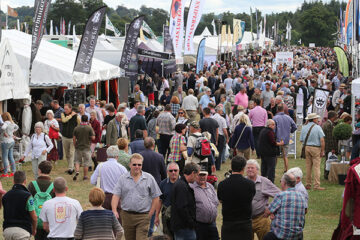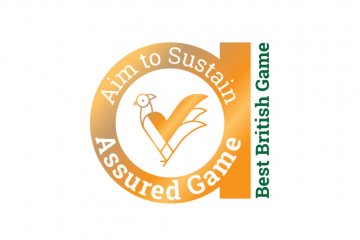World Curlew Day 2023

Working conservationists help shape life-saving policy
There may be someone who doesn’t like curlews but I have yet to meet them. The curlew is the very essence of our wild and beautiful open landscapes, the salt marshes, the upland pastures and moors, and the wide summer hay meadows. They are almost universally loved and deserve to be.
Unfortunately, love is not enough. Curlew populations are falling almost everywhere, they are already extinct over much of their historic breeding range and in many, too many, places, they cling on only because they are long lived birds. There may be pairs returning to nest for the 15th or 16th time having never fledged a chick.
What is the cause of this tragedy? Like many apparently intractable problems, there is no single cause. Modern grassland management, based on silage, rather than hay, means that nests and chicks are lost during the grass harvest, unless there are major sacrifices of time and money. Even in the uplands, grasslands are less invertebrate rich than they used to be, partly because successive governments have used financial incentives to encourage the installation of moorland ‘grips’ or drains.
Then there is the problem that curlew are birds of open country. They don’t like even being near a wood, let alone in one. To them woods and forests are just a source of danger, and something to avoid. It is calculated that when Kielder Forest was planted in Northumberland, around 1,750 pairs of curlew were displaced. But this is nothing compared to the 5,000 pairs that disappeared from Galloway when it was almost buried under conifers. Without care, the current targets for planting trees or allowing them to invade open spaces, can be predicted to make things much worse for curlew.
Finally, in most of the places where curlews nest their chicks are far more likely to be killed and eaten by common generalist predators such as foxes, stoats, and corvids, than they are to fledge. There is a mass of evidence that shows that where the habitat is suitable, and where there is efficient and effective predator control, curlews do really well. Protected from generalist predators they are very good at rearing chicks.
So, what needs to be done? Three measures will make a significant difference.
First, in areas where grass is harvested farmers need to be paid to farm in a curlew friendly way. Government incentives should encourage systems that integrate profitable food production and curlew. A2S partners lobbied for curlew protection to be integrated with other measures that support rare species, alongside sustainable food production, as the government developed its Environmental Land Management Schemes.
Second, there should be a presumption against planting trees, or allowing trees to invade, areas which are known to be important to breeding curlew, or even near enough to these places to impact on the nesting curlew. We welcome the guidance for England published in August last year (here) jointly by Defra, Natural England and the Forestry Commission, to safeguard wading birds and to avoid any potential conflict between the aims of establishing new woodlands and protecting very rare bird species. A2S members are managing this balance by creating small stands of native species in appropriate areas and replanting riparian habitats to encourage insect life while ensuring the open habitat required by ground-nesting birds for nesting and foraging is maintained and protected.
Third, wherever breeding curlew occur there should be a regime of humane, legal and effective predation control. This would include the management of the landscape to inhibit predatory behaviour, the use of nesting protection techniques such as temporary electric fences and the lethal control of common generalist predators. A2S partners have worked with the government and statutory agencies regarding the benefits of predator control for moorland species and we are heartened by its inclusion in policy. The new integrated pest management standard should allow many more farms and land managers to afford vital predation management in line with best practice.
We know this complete formula works because it is already applied (at no public cost) over large parts of upland Britain and we know that curlew are breeding with more success there than anywhere else. The research published by GWCT, the scientific adviser to Aim to Sustain, in March this year (here) confirmed the findings of previous studies, that efficient lethal predator control on moorland is associated with high breeding success for curlew. Curlew breeding success was four-fold higher on moors managed for red grouse then on non-grouse moors. Broods often fledge at least one chick per adult pair exceeding the magic number for a sustainable population of 0.7. Similar differences were apparent in other wader species. Grouse moors and their immediate hinterland of upland pasture are managed for ground nesting birds by cutting or burning mature or degenerate vegetation outside the birds’ breeding season, the moors are kept as wet as possible to encourage insect life, the financial incentives to plant forestry on open habitat have been resisted and the predators of ground nesting birds are efficiently controlled.
This has proven to be effective for curlew, not to mention lapwing, redshank, snipe, ring ouzel, merlin and a host of other ground nesting birds breeding successfully on these moors.
In 2022 Natural England granted a licence for a pioneering curlew translocation project to expand the bird’s potential territory in England. 40 curlew eggs were collected from grouse moors in the north of England, incubated in specialist conditions and transported safely to appropriate habitat under similar management regime on a sporting estate in the south of England, where curlew are locally extinct. The project was so successful that it has been extended for a further five years and this year the number of eggs to be collected will triple from 40 to 120. It is hoped the adult birds will breed and establish a successful colony in Sussex.
All those involved in sustainable game management stand ready to help the curlew in any way we can and we are happy to work in genuine partnership with anyone to help them enhance their capacity to turn the current frightening decline of this wonderful bird into a sustained recovery.


